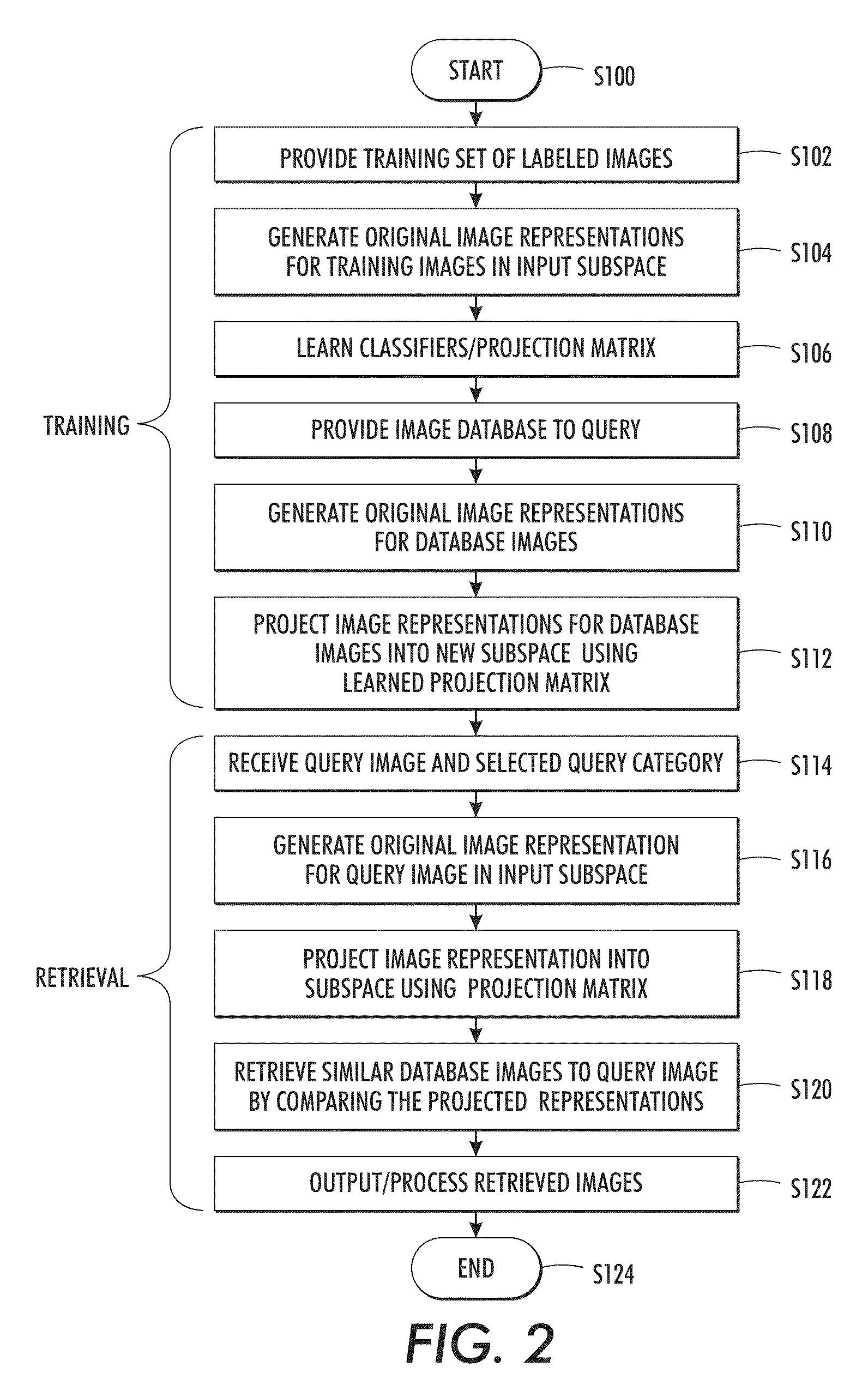Retrieval system and method leveraging category-level labels
a category-level label and search system technology, applied in the field of search systems and methods leveraging category-level labels, can solve problems such as the inability to improve precision and recall measures
- Summary
- Abstract
- Description
- Claims
- Application Information
AI Technical Summary
Benefits of technology
Problems solved by technology
Method used
Image
Examples
example 1
[0116]Two standard benchmark datasets were used as the database images:
[0117]1. INRIA Holidays (Holidays) contains 1,491 images of 500 scenes and objects. One image per scene / object is used as query to search within the remaining 1,490 images and accuracy is measured as the Average Precision (AP) averaged over the 500 queries.
[0118]2. The University of Kentucky Benchmark (UKB) contains 10,200 images of 2,550 objects. Each image is used in turn as query to search within the 10,200 images and accuracy is measured as 4×recall@4 averaged over the 10,200 queries. Hence, the maximum achievable score is 4.
[0119]As a source of labeled training data with category-level labels (to learn the projections in a supervised manner), a standard subset of ImageNet: the ImageNet Large Scale Visual Recognition Challenge 2010 (ILSVRC10) was used. This dataset contains 1,000 classes and consists of 3 sets: training, validation and test sets which contain respectively 1.2M, 50K and 150K images. In this ex...
example 2
[0136]Large-scale experiments were also performed. 1M images were obtained from ImageNet (different from those of ILSVRC 2010) and used as distractors. For instance, when querying with a Holiday (resp. UKB) image this was done on the combined Holiday (resp. UKB)+1M distractors dataset. Results for Holidays are shown in Table 3 and for UKB in Table 4. Except for the case of a very small number of dimensions (R=16), there is a significant improvement with respect to the unsupervised PCA baseline.
[0137]
TABLE 3Subspace learning as joint classifier and dimensionalityreduction learning: Results on Holidays + 1M distractorsR = 16R = 32R = 64R = 128R = 256R = 5121. Baseline25.5%39.3%50.3%56.5%61.2%64.4%PCA6. Exemplary26.8%48.6%58.3%63.3%64.7%66.1%Method
[0138]
TABLE 4Subspace learning as joint classifier and dimensionalityreduction learning: Results on UKB + 1M distractorsR = 16R = 32R = 64R = 128R = 256R = 5121. Baseline2.102.532.812.933.023.07PCA6. Exemplary1.982.763.073.193.173.23Method
PUM
 Login to View More
Login to View More Abstract
Description
Claims
Application Information
 Login to View More
Login to View More - R&D
- Intellectual Property
- Life Sciences
- Materials
- Tech Scout
- Unparalleled Data Quality
- Higher Quality Content
- 60% Fewer Hallucinations
Browse by: Latest US Patents, China's latest patents, Technical Efficacy Thesaurus, Application Domain, Technology Topic, Popular Technical Reports.
© 2025 PatSnap. All rights reserved.Legal|Privacy policy|Modern Slavery Act Transparency Statement|Sitemap|About US| Contact US: help@patsnap.com



